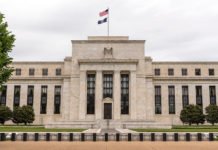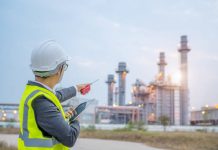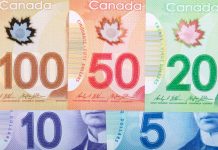- The U.S. economy expanded at a 6.5% annualized pace in the second quarter, below the median consensus estimate for 8.4%.
- Consumers were the key driver of domestic demand strength. Spending rallied 11.8%, following a 11.4% pace in Q1. Consumer spending was strong across categories, led by a 12.6% jump in nondurable goods, but durables (+9.9%) and services (+12.0%) were also healthy.
- Government spending, by contrast, pulled back in the second quarter, falling 1.5%. The outturn was heavily influenced by a decrease in federal government activity (-5.0%) while the state and local level flipped to expansion (+0.8%) after contracting in the first quarter.
- Nonresidential investment was up (+8.0%). Investment in structures fell further (-6.9%) while spending on equipment continued to come in at a double-digit pace, decelerating only marginally to +13.0% (following a 14.1% increase in Q1). Intellectual property products rose 10.7%, a healthy follow through from a 15.6% gain in Q1.
- Residential investment pulled back in the second quarter falling 9.8% and subtracting 0.5 percentage points (ppts) from growth.
- The drawdown in private inventories shaved 1.1 ppts from growth in the quarter.
- Exports rose less than expected (6.0%) while imports were a bit stronger than anticipated, up 7.8% in Q2, so net exports still subtracted from growth (-0.4%-pts) compounding the drag from Q1.
- Finally, largely as expected, price pressures accelerated in the second quarter, with the core PCE deflator up 6.1% on an annualized quarter-over-quarter basis.
- Relative to the breakneck speed of the expansion, benchmark revisions were relatively minor. The level of GDP was revised down 0.2% in the first quarter compared to the previous release.
Key Implications
- The American economy expanded at a brisk pace in the second quarter, though somewhat below lofty expectations. Growth was powered by the consumer while federal government expenditures, residential real estate investment and a drawdown in inventories acted as headwinds. Total economic activity is now slightly above (+0.8%) its pre-pandemic level as economic reopening and a receding virus has helped bring back a semblance of normalcy.
- The picture here is of an economy where healthy domestic demand is setting the tone for the expansion. However, as noted yesterday by the FOMC, the course of the recovery will be guided by the virus. Vaccination rates have plateaued in the U.S., and, with COVID-19 cases rising again in many states, political resolve against implementing another round of restrictions will be challenged.
- Surging demand coupled with supply chain issues have helped propel core PCE inflation (6.1% q/q annualized, 3.4% year-on-year), well ahead of the Fed’s two percent target. Policymakers have reiterated that they will be looking through this temporary bout of price increases, but any indication of permanence (like an upward shift in inflation expectations) could test their commitment.













